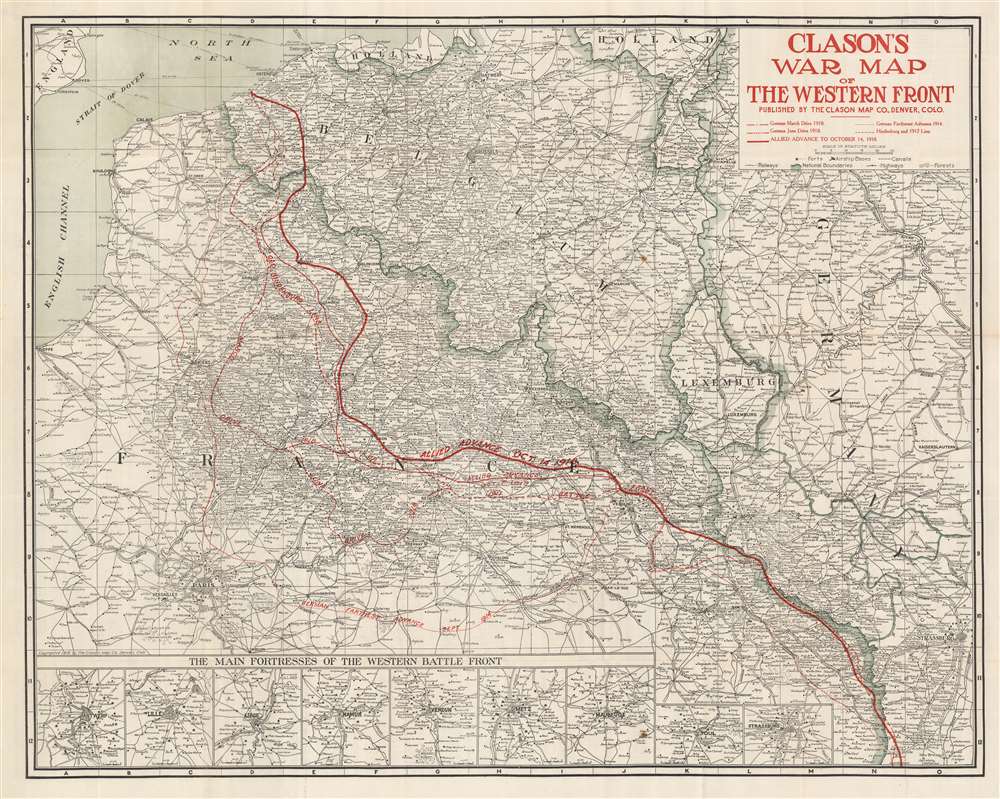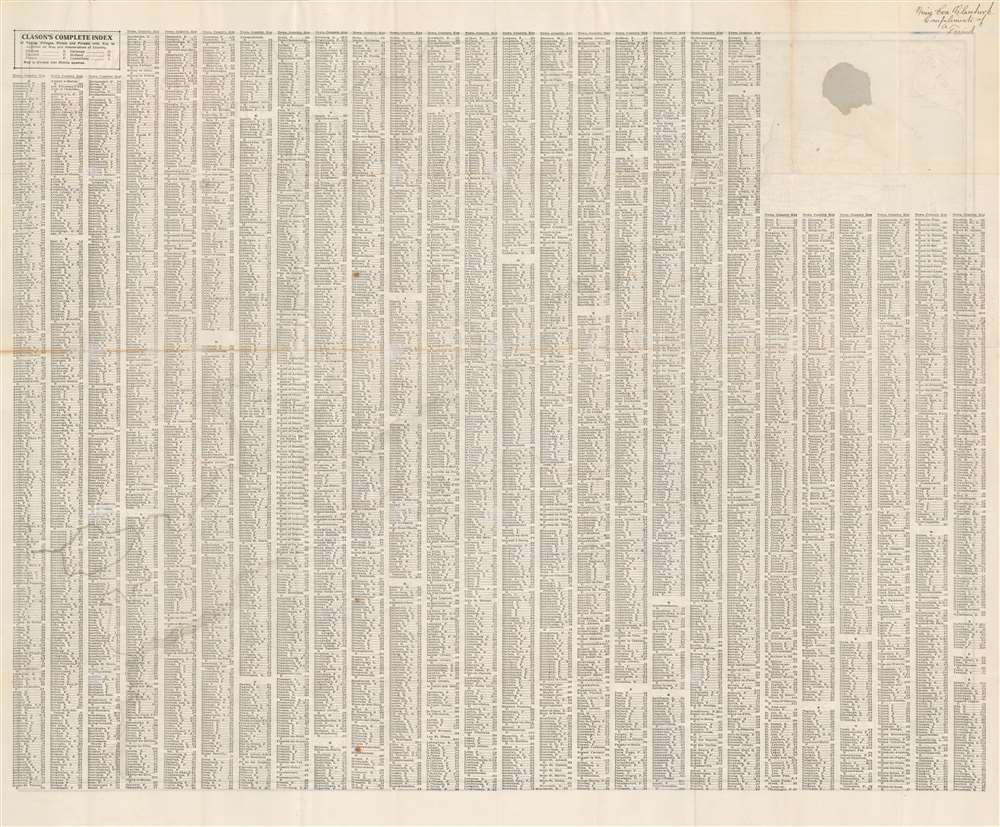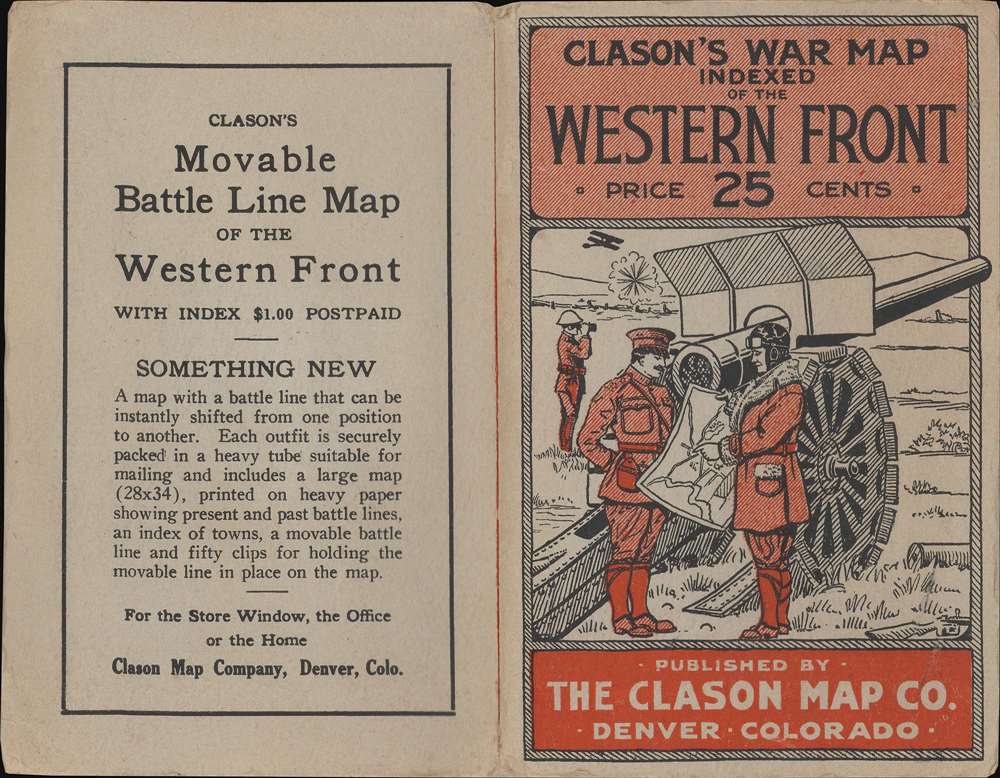This item has been sold, but you can get on the Waitlist to be notified if another example becomes available, or purchase a digital scan.
1918 Clason Map of Northern France WWI Western Front in late October 1918
WesternFrontOctober14-clason-1918
Title
1918 (dated) 26 x 32.5 in (66.04 x 82.55 cm) 1 : 600500
Description
Publication History and Census
This map was created by the Clason Map Company and published in 1918. We are aware of at least four different editions of this map, this being an example of the third edition. Likely published as a means for American civilians to keep track of where the American Expeditionary Force was fighting, previous editions include the battle lines up to their date of publication. All four editions of the map are scarce on the private market with only ten examples of varying editions catalogued in institutional collections.Cartographer
George Samuel Clason (November 7, 1874 - 1957) was born in the city of Louisiana, Missouri in 1874. As a young man, Clason studied at the University of Nebraska before joining the United States Army in 1898 to fight in the Spanish American War. After the war, he moved to Denver, Colorado where in 1905 he founded the Clason Map Company, thus starting his lucrative publishing career. Clason initially focused on mining and mineral maps - capitalizing on the Colorado and Nevada mining industry, but quickly transitioned to railroad maps, city maps, and by the 1920s, road maps. As the company expanded, Clason opened a secondary office in Chicago, Illinois - then a rising map publishing center and railroad hub. At least one other satellite office was opened in Los Angeles. Among his many achievements, Clason is credited with producing the first modern road atlas of the United States. In the late 1920s, Clason also published a series of get-rich-quick pamphlets in the form of parables. The most famous of these is The Richest Man in Babylon. This tells the story of Arkad, a citizen of Babylon famed for his great wealth and generosity who shares his wit and wisdom with his fellow Babylonians. In 1949, Clason moved to Napa, California to retire and found a social club for retired gentlemen. More by this mapmaker...






